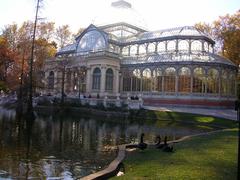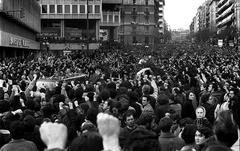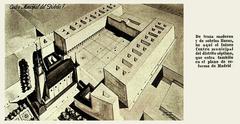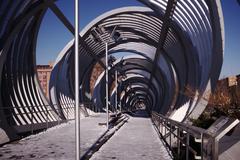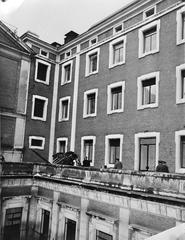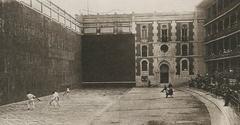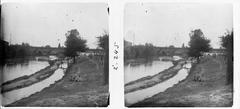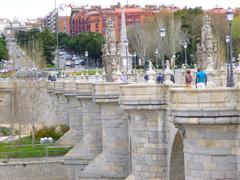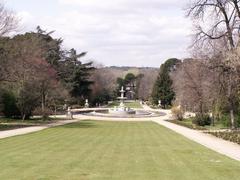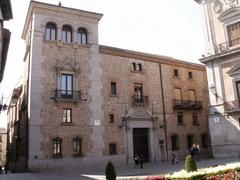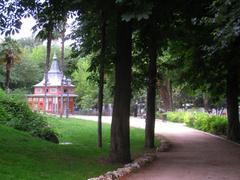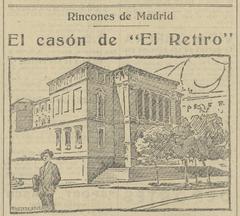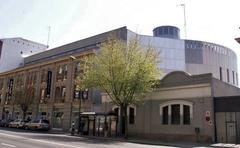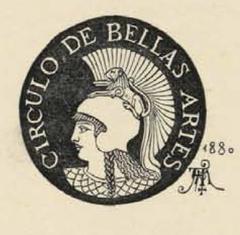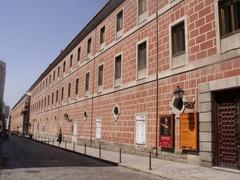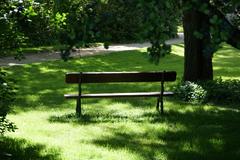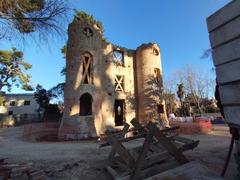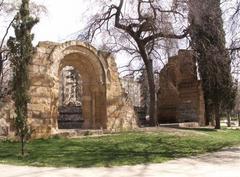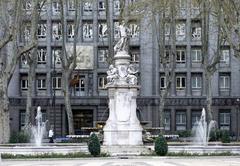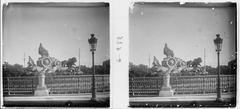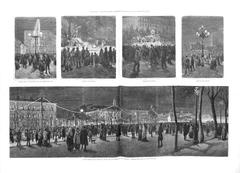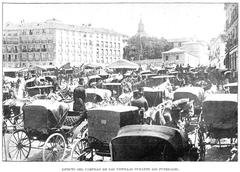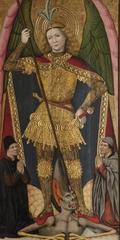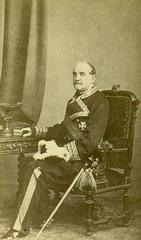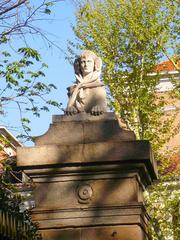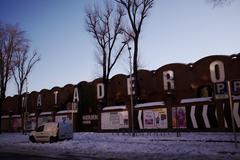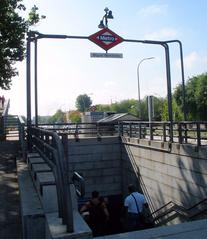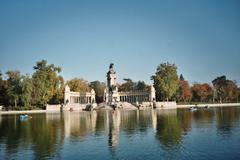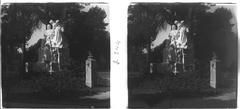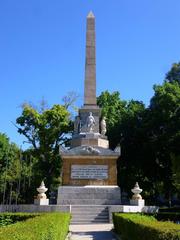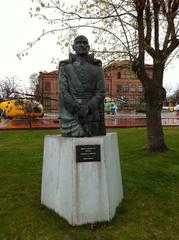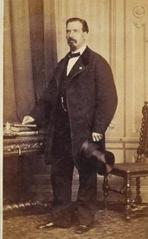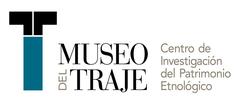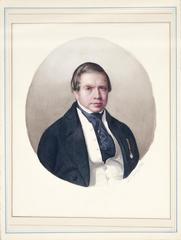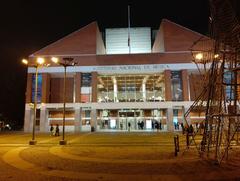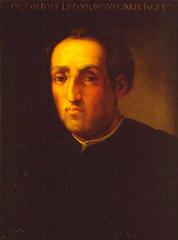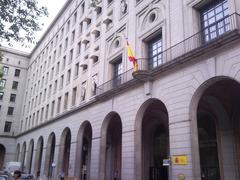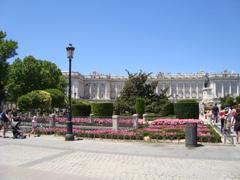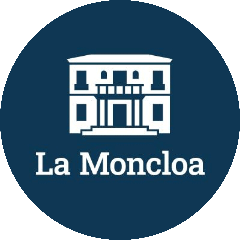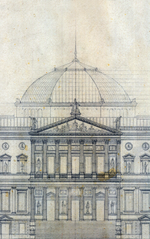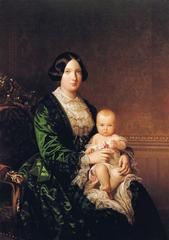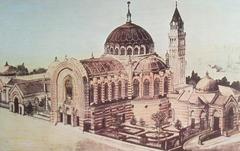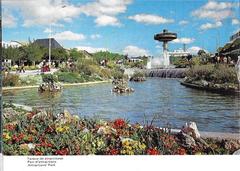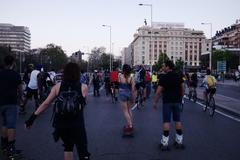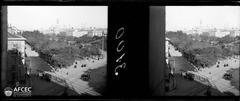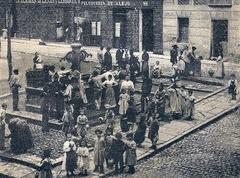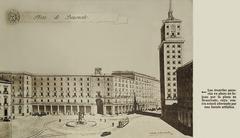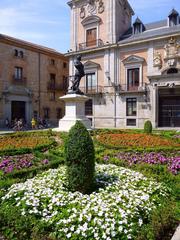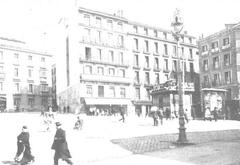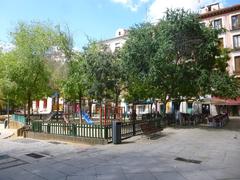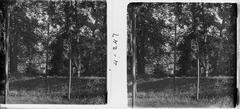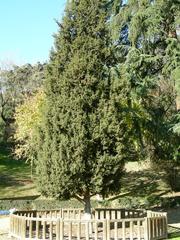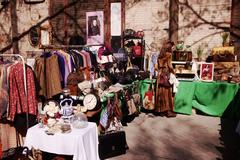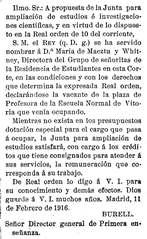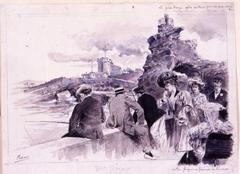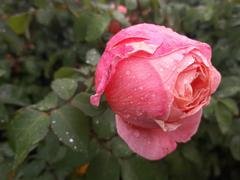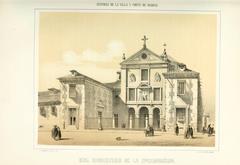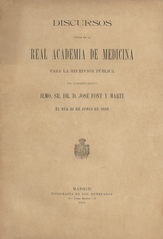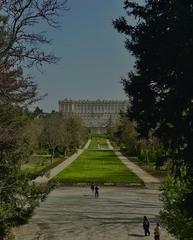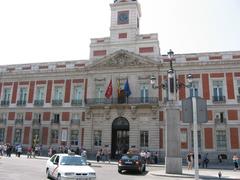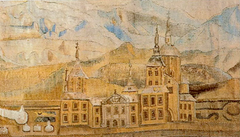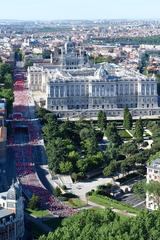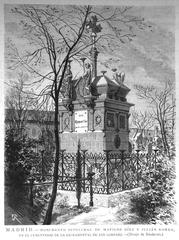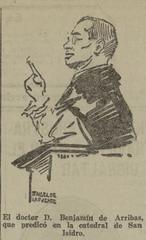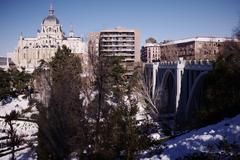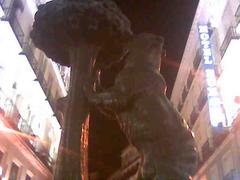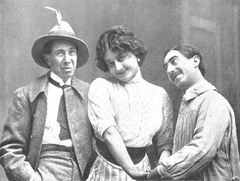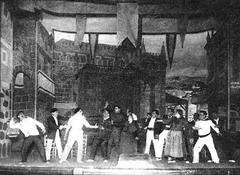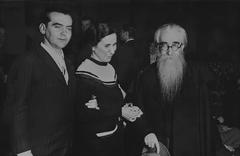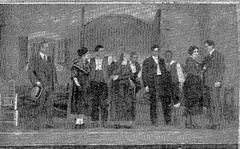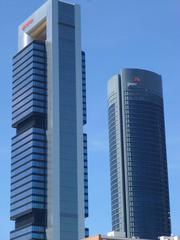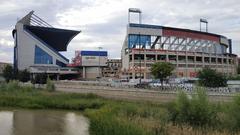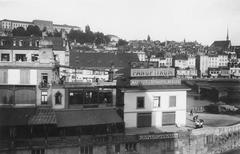
Comprehensive Guide to Visiting Crystal Palace, Madrid, Spain
Date: 17/08/2024
Introduction
The Crystal Palace (Palacio de Cristal) in Madrid is a breathtaking example of 19th-century iron and glass architecture. Nestled within the lush grounds of Retiro Park, a UNESCO World Heritage Site, this architectural marvel blends natural beauty, historical depth, and contemporary art. Originally constructed in 1887 by Ricardo Velázquez Bosco as a greenhouse for the Plants of the Philippines Exhibition—a testament to Spain’s botanical and colonial interests—the palace has since become a vibrant cultural venue, managed by the Museo Nacional Centro de Arte Reina Sofía. Today, it hosts innovative site-specific art installations that interact with its transparent structure, drawing visitors from around the world (Guide to Europe).
This comprehensive guide covers the history, architecture, visitor information, nearby attractions, and practical tips to ensure a rewarding visit to this iconic Madrid landmark.
Table of Contents
- Introduction
- History and Significance
- Visitor Information
- Nearby Attractions
- Frequently Asked Questions (FAQ)
- Conclusion
- References
History and Significance
Origins and Colonial Context
The Crystal Palace was conceived by Ricardo Velázquez Bosco for the 1887 Plants of the Philippines Exhibition, a showcase of Spain’s colonial reach and botanical interests. Modeled after London’s renowned Crystal Palace, its innovative iron and glass construction allowed for an unobstructed, light-filled interior that was both functional and visually striking. The cast-iron columns were produced in Bilbao, and the structure’s modular design was intended to allow for potential relocation—though it has remained beside its iconic lake in Retiro Park (My Madrid Pass).
Architectural Features and Innovations
The palace exemplifies the late 19th-century movement of ‘iron architecture,’ characterized by a harmonious interplay of iron, glass, and ceramic detailing. Expansive glass panels create a luminous, airy effect, while the ornamental ironwork—with elegant arches and columns—contributes to a light, cage-like aesthetic. Notably, its south-facing portico opens onto a picturesque lake inhabited by ducks and geese, seamlessly integrating the structure with Retiro Park’s natural landscape.
Evolution of Function and Cultural Impact
After its debut as a greenhouse, the palace quickly transitioned to host National Fine Arts Exhibitions, establishing its role as a cultural hub. Surviving the Spanish Civil War and subsequent neglect, it underwent restoration in 1975. Since 1990, it has been managed by the Museo Nacional Centro de Arte Reina Sofía, serving as a venue for cutting-edge contemporary art installations. Its historical and cultural resonance is heightened by events such as hosting the parliamentary vote that elected Manuel Azaña as president of the Spanish Republic in 1936.
Visitor Information
Opening Hours and Admission
- Standard Hours: Typically open daily from 10:00 AM to 10:00 PM in summer, and until 6:00 PM in winter. However, hours may vary depending on the season or special exhibitions—always check the official website before your visit.
- Admission: Entry is free for all visitors. Some special exhibitions may require a ticket—check for updates online (Guide to Europe).
Getting There & Accessibility
- Location: Paseo de Cuba, 4, 28009 Madrid, Spain, within Retiro Park.
- Public Transport:
- Metro: Retiro (Line 2) or Atocha (Line 1)
- Bus: Several lines serve the park entrances.
- By Car: Limited parking is available nearby; public transport is advised due to central location and traffic.
- Accessibility: The palace and its main pathways are wheelchair accessible. For specific needs, consult the official website.
Best Times to Visit
- Spring (April-May): Enjoy mild weather and blooming gardens.
- Autumn (October): Experience beautiful fall foliage.
- Weekdays & Early/Late Hours: Visit early morning or late afternoon on weekdays to avoid crowds.
Travel Tips
- Wear comfortable shoes for walking in Retiro Park.
- The palace can get warm inside on sunny days—bring water and light clothing.
- Photography is encouraged; the interplay of light and glass creates exceptional photo opportunities.
- No smoking or pets (except service animals) are allowed inside the palace.
Nearby Attractions
- Retiro Park: Expansive gardens, monuments, and tranquil paths.
- Great Pond of El Retiro: Rowboat rentals and scenic views.
- Rose Garden (La Rosaleda): Best visited in May-June.
- Monument to Alfonso XII: Dramatic colonnade overlooking the pond.
- Velázquez Palace: Another exhibition venue managed by the Reina Sofía Museum.
- Royal Botanical Garden & Prado Museum: Both are within walking distance for a full day of culture and nature (Explorial).
Frequently Asked Questions (FAQ)
What are the Crystal Palace visiting hours?
Typically 10:00 AM–10:00 PM in summer, 10:00 AM–6:00 PM in winter. Confirm current hours on the official website.
Is there an entrance fee?
No, admission is free. Special exhibitions may occasionally require a ticket.
How do I get there?
Metro (Retiro or Atocha stations), bus, or on foot from Madrid’s city center.
Is the palace accessible for disabled visitors?
Yes, the entrance and interior are wheelchair friendly.
Are pets allowed?
Pets are permitted in Retiro Park but not inside the Crystal Palace.
Are guided tours available?
Guided tours can be booked in advance through the Reina Sofía Museum’s website (My Madrid Pass).
Conclusion
The Crystal Palace in Madrid is a unique confluence of historical grandeur, architectural innovation, and contemporary creativity. Its journey from a colonial greenhouse to a modern art space mirrors Madrid’s dynamic cultural evolution. Set in the heart of Retiro Park, the palace promises an enriching experience for art aficionados, history buffs, and those seeking tranquility amid beauty. With free admission and year-round access, it stands as a must-see destination in Spain’s vibrant capital. Plan your visit to explore this iconic monument and nearby cultural attractions for a truly memorable Madrid adventure (Museo Nacional Centro de Arte Reina Sofía).
